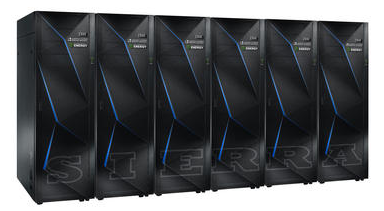IBM, Nvidia tapped to build world's fastest supercomputers


The US Department of Energy, working with IBM, Nvidia and Mellanox, will spend $325 million to build the world's fastest supercomputers by 2017.
Dubbed Sierra and Summit, the two GPU-accelerated supercomputers will rely on IBM's OpenPOWER chips, Nvidia's new graphics chip Volta, and Mellanox’s high-speed networking to wire everything together.
Summit is intended for civilian and scientific use at the Oak Ridge National Laboratory in Tennessee, and is the more powerful of the two, capable of delivering 150 to 300 peak petaflops.
Sierra will be capable of performing in excess of 100 peak petaflops and is intended for use in nuclear weapons simulations at California's Lawrence Livermore National Laboratory.
If that's not impressive enough, take a look at the competition. Both Sierra and Summit will crush the current computing speed champs in the US and across the globe. Oak Ridge's Titan holds the US record at 27 peak petaflops, while the current world record holder, China's Tianhe-2, clocks in at a mere 55 peak petaflops.
But IBM is also touting a new "data centric" approach that is at work within the systems. By placing computing power everywhere data resides, IBM says it can minimize data in motion and energy consumption.
The Sierra and Summit systems will be capable of moving data to the processor at more than 17 petabytes per second — the equivalent to moving more than 100 billion photos on Facebook in one second.
"Today's announcement marks a shift from traditional supercomputing approaches that are no longer viable as data grows at enormous rates," said Tom Rosamilia, SVP of IBM's Systems and Technology Group, in a statement. "IBM's Data Centric approach is a new paradigm in computing, marking the future of open computing platforms and capable of addressing the growing rates of data."
In a separate but related announcement, the DoE says it will invest $100 million in FastForward2, an R&D program focused on creating more powerful and energy-efficient supercomputers. IBM, Nvidia, Intel, AMD, and supercomputer maker Cray are some of the companies set to take part.
"High-performance computing is an essential component of the science and technology portfolio required to maintain U.S. competitiveness and ensure our economic and national security," US Secretary of Energy Ernest Moniz said in a statement.